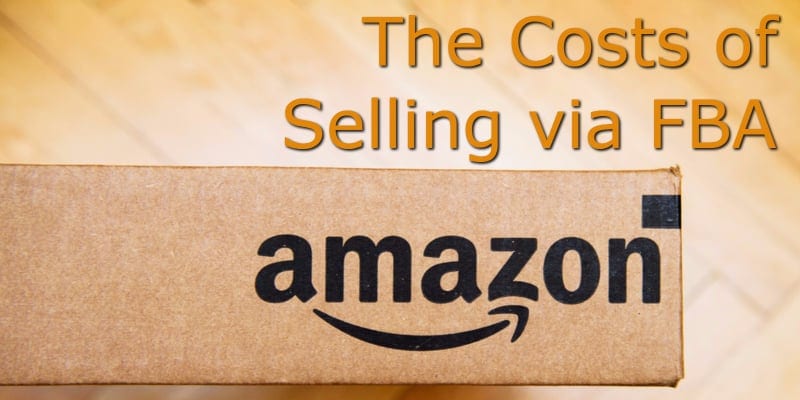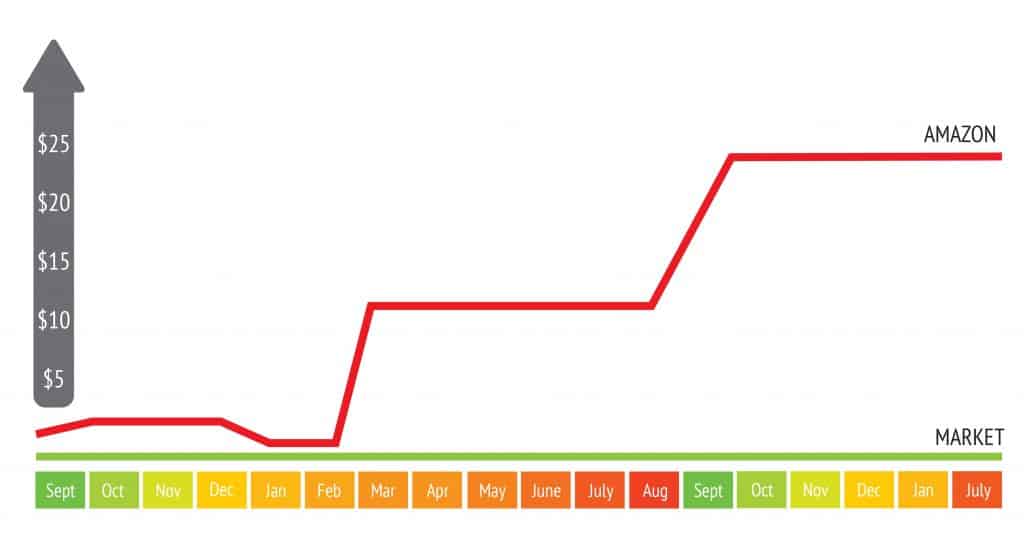The Costs of Selling on Amazon via FBA
Many in retail are rightly preoccupied with the most disruptive force in their business: Amazon. More specifically, they want to better understand the costs of selling on Amazon.
From our perspective, Amazon is another retailer we need to know how to ship to, and potentially learn from as they are in the business of fulfillment. But that is not how many clients view this increasingly powerful force in the retail world, or indeed the world in general.

Last year Amazon recognized that their profits, such as they are, suffered from excess inventory in 2015. In response, they instituted an increased storage fee schedule for Fulfillment by Amazon (FBA) from October through December. These rates are more than 250% of the January through September rates.
This third-party review of these increases is also eye-opening -- or eye-watering, if you're one of the retailers on the end of a 50%+ hike.
The Costs of Selling on Amazon
Right off the bat, Amazon is already charging comparatively high storage rates.
In our industry, per pallet storage fees run from around $8 to $15 per month in coastal states near the major ports, like those in which we operate. That represents about 65 cubic feet, or around $0.20 per cubic foot per month. Amazon charges $0.64 per cubic foot in slow months and $2.35 in peak, or approximately 3 to 10x the industry norm. This goes up after six months, so you better plan your inventory well.

If you have items with Fulfillment by Amazon (aka FBA) for more than 6 months, those charges escalate to $11.25 and over 12 months they go to $22.50. To be fair, you should be able to manage your inventory turns to avoid this, but they are providing powerful incentives to make sure you do.
Some smaller brands have understandably built their business by leveraging the extraordinary ecosystem Amazon has created. However, as with the gentrification in our cities, some of those brands are finding out they moved into a neighborhood they can no longer afford.
A small brand, dominant in its product type, earned half of their revenue selling on Amazon. When informed that Amazon would be increasing commissions 20% the brand’s founder reached out (via email – we have heard you can’t readily speak to a human) to try and negotiate this down to 5% or even 10%.
The answer was no. When the brand indicated they would need to increase prices to cover the increase the answer was, once again, a firm no. The costs of selling on Amazon just shifted beneath the feet of an otherwise profitable and rising brand.
The Bottom Line of Selling on Amazon via FBA
By selling a brand's products, Amazon has more data about those sales than most companies can possibly gather. This wealth of data is a double-edged sword.
There is a tradition in the cutthroat US retail environment of retailers taking more and more margin from those brands and companies who make, merchandise, market and sell products. This has even extended to simply making the product and then completely displacing the originator.
It is not clear if Amazon is going in that direction, but they make batteries (I just bought some), so who is to say when they will expand their reach upstream into much of what they sell.
When it comes to the costs of selling on Amazon and signing up for FBA, it pays to plan for the long-term. You can sit down at their table early on and begin to enjoy the meal, but there's no guarantee that, somewhere down the line, your new dining companion won't simply eat your lunch.